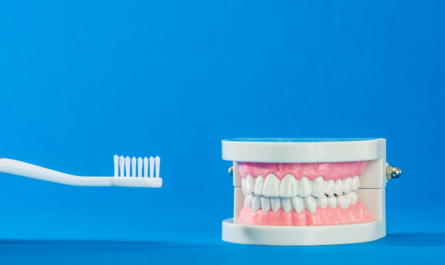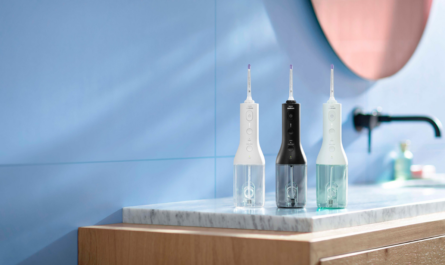Physician survey shows that employed physicians are more positive, enjoy clinical autonomy
Dental professionals involved in group practices and DSOs might take note of a newly released survey of their physician counterparts.
“America’s physician workforce is undergoing significant changes,” Walker Ray, M.D., vice president of The Physicians Foundation and chair of its Research Committee, was quoted as saying, following the release of The Physicians Foundation’s 2014 Survey of America’s Physicians, conducted by Merritt Hawkins. “Physicians are younger, more are working in employed practice settings and more are leaving private practice.”
The survey, conducted online from March 2014 through June 2014, measured responses from 20,088 physicians across the United States.
Changing attitudes
Relative to the national surveys The Physicians Foundation conducted in 2012 and 2008, doctors are more positive in their outlook as their ranks change demographically and as their status rapidly shifts from that of independent practice owner to employee, according to Merritt Hawkins.
The 2014 respondents are younger, and more likely to work in employed settings (e.g., hospital systems), compared to those in earlier surveys. More are females, and more work in primary care. In 2014, the average age of the respondents is 50, vs. an average age of 54 in 2012. In 2014, 33 percent of the survey respondents are female, vs. 26 percent in 2012.
Younger physicians, female physicians, employed physicians and primary care physicians are more positive about the current medical practice environment than are older physicians, male physicians, medical specialists and practice owners (though the majority of almost all groups suffer from low morale and express doubts about the direction of the healthcare system).
Of particular interest to dentists might be the responses to a question about clinical autonomy: Employed physicians indicated their clinical autonomy is slightly less limited than practice owners, by a margin of 68.2 percent to 70.6 percent.
Regarding practice ownership:
- Only 35 percent of physicians describe themselves as independent practice owners, down from 49 percent in 2012 and 62 percent in 2008.
- Fifty-three percent of physicians describe themselves as hospital or medical group employees, up from 44 percent in 2012 and 38 percent in 2008.
- Only 17 percent of physicians indicate they are in solo practice, down from 25 percent in 2012.
Morale
Just more than half of employed physicians described their morale as very or somewhat positive, compared to only 33.1 percent of practice owners. The majority of physicians 45 or younger (54.3 percent) described their morale as very or somewhat positive, compared to only 38.9 percent of physicians 46 or older.
The relatively positive feelings expressed by younger physicians may be in part a result of the fact that most doctors under the age of 45 entered the profession when changes to physician practice structures and reimbursement already were underway, according to the researchers. Many have always been employed and have no basis for comparing the employed practice model to the independent model.
Autonomy in clinical decision-making
Fewer than one-third of physicians say they are free to make the best decisions for their patients, while 69 percent say their medical decisions are sometimes or often compromised.
Employed physicians indicated their clinical autonomy is slightly less limited than practice owners, by a margin of 68.2 percent to 70.6 percent. This contradicts the widely perceived notion that physicians sacrifice clinical autonomy in order to become employees, while practice owners sacrifice security to preserve clinical autonomy, Merritt Hawkins researchers note.
In what may be another surprise to some, employed physicians report working more hours per week on non-clinical duties than do practice owners. Employed physicians report spending 10.63 hours per week on non-clinical paperwork, while owners report spending 9.79 hours. One of the presumed benefits of physician employment is that it frees doctors from the non-clinical duties of running a practice with which practice owners must contend, and therefore allows them to spend more time with patients. Both the 2014 and the 2012 surveys suggest this is not the case.
Editor’s Note: To receive a copy of the 2014 Survey of America’s Physicians, go to www.physiciansfoundation.org
—————————————————————————————————–
Hospital employment of physicians is a positive trend likely to enhance quality of care and decrease costs.
| 45 or younger | 46 or older | |
| Mostly agree | 11.7 percent | 8.1 percent |
| Somewhat agree | 35.7 percent | 23.4 percent |
| Somewhat disagree | 27.7 percent | 29.3 percent |
| Mostly disagree | 24.9 percent | 39.2 percent |
Source: 2014 Survey of America’s Physicians, ©2014, The Physicians Foundation
——————————————————————————————-
HEAD: Owner or employee?
Among physicians who identified themselves as employees, 57.6 percent say they are employed by a hospital, and 42.4 percent say they are employed by a medical group.
Which best describes your morale and your feelings about the current state of the medical profession?
| Employed | Owner | |
| Very positive | 9.9 percent | 6.2 percent |
| Somewhat positive | 40.6 percent | 26.9 percent |
| Somewhat negative | 35.2 percent | 40.7 percent |
| Very negative | 14.3 percent | 26.2 percent |
Which best describes how you feel about the future of the medical profession?
| Employed | Owner | |
| Very positive | 11.2 percent | 7.0 percent |
| Somewhat positive | 42.0 percent | 33.0 percent |
| Somewhat negative | 38.3 percent | 43.5 percent |
| Very negative | 8.5 percent | 16.5 percent |
Hospital employment of physicians is a positive trend likely to enhance quality of care and decrease costs.
| Employed | Owner | |
| Mostly agree | 13.1 percent | 3.2 percent |
| Somewhat agree | 36.3 percent | 13.5 percent |
| Somewhat disagree | 28.7 percent | 27.9 percent |
| Mostly disagree | 21.9 percent | 55.4 percent |
Has your practice implemented electronic medical records?
| Employed | Owner | |
| Yes | 92.9 percent | 73.5 percent |
| No | 7.1 percent | 26.5 percent |
If yes, how has EMR affected your practice?
| Employed | Owner | |
| Improved quality of care | 36.1 percent | 23.7 percent |
| Detracted from quality of care | 23.1 percent | 26.9 percent |
| Improved efficiency | 25.3 percent | 22.5 percent |
| Detracted from efficiency | 45.0 percent | 48.3 percent |
| Improved patient interaction | 4.9 percent | 4.2 percent |
| Detracted from patient interaction | 46.6 percent | 48.0 percent |
| Has had little to no impact on above | 6.2 percent | 9.8 percent |
Source: 2014 Survey of America’s Physicians, ©2014, The Physicians Foundation





